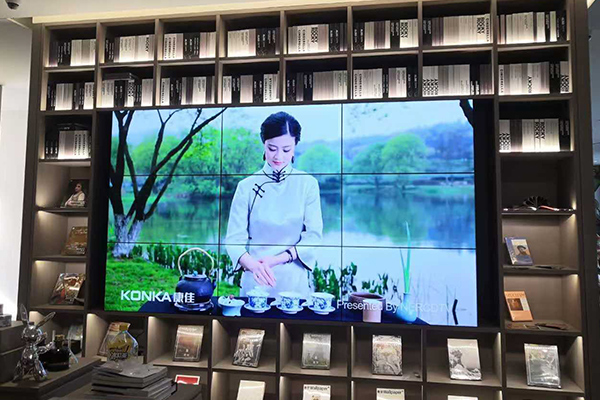Installation and maintenance of LCD splicing screen
The splicing screen offers a variety of display functions, including single-screen splitting, individual display, arbitrary combination, and full-screen LCD splicing screen. It also supports roaming, zooming, stretching, and cross-screen display of digital signals. Furthermore, users can freely set and run various display plans, enabling real-time processing of full HD signals.
LCD Splicing Screen Installation Steps
2.1 ◉ Installation Floor Requirements
The floor where the LCD video wall is installed must be flat and have sufficient load-bearing capacity. Because LCD video wall systems are relatively large and heavy, the selected floor must be able to support their weight. Furthermore, the installation floor should be anti-static to ensure the stability and longevity of the LCD video wall.
2.2 ◉ Cabling Key Points
Calibration is crucial when installing an LCD splicing screen. Ensure that power and signal cables are properly separated and installed in appropriate locations to prevent interference. Furthermore, accurately calculate the required cable lengths and specifications based on the overall screen size and installation location to ensure a smooth installation.
2.3 ◉ Ambient Lighting Requirements
Although LCD splicing screens offer high brightness, the lighting conditions of the installation environment must be carefully considered to ensure optimal viewing experience. Excessive light can obscure the image on the screen, affecting the viewing experience. Therefore, appropriate shielding measures should be taken around the screen where light may enter, such as through windows. It is also recommended to turn off the lights while the device is running to ensure stable operation.
2.4 ◉ Frame Design Requirements
To ensure efficient and convenient maintenance of the LCD splicing screen, the frame edge should be removable. Additionally, a clearance of approximately 25mm should be maintained between the inner edge of the outer frame and the outer edge of the video wall. For large video walls, this margin should be increased based on the number of columns. Furthermore, to facilitate access to the cabinet for maintenance, the width of the maintenance passage should generally be no less than 1.2 meters.
2.5 ◉ Ventilation Requirements
Air conditioning or air vents must be installed in the maintenance passage to ensure adequate ventilation for the LCD video wall. The air vents should be located approximately 1 meter from the LCD video wall to prevent air from blowing directly onto the cabinet, ensuring even heating of the screen and preventing damage.
In addition, several other key aspects should be considered during the installation of the LCD video wall. If image issues such as ghosting occur, first check the length and thickness of the transmission cable and attempt to resolve the issue by replacing the cable or adding a signal amplifier. If focus is poor, adjust the display terminal for optimization. When faced with a problem, in-depth analysis is key; it helps quickly identify the root cause and implement effective solutions.

